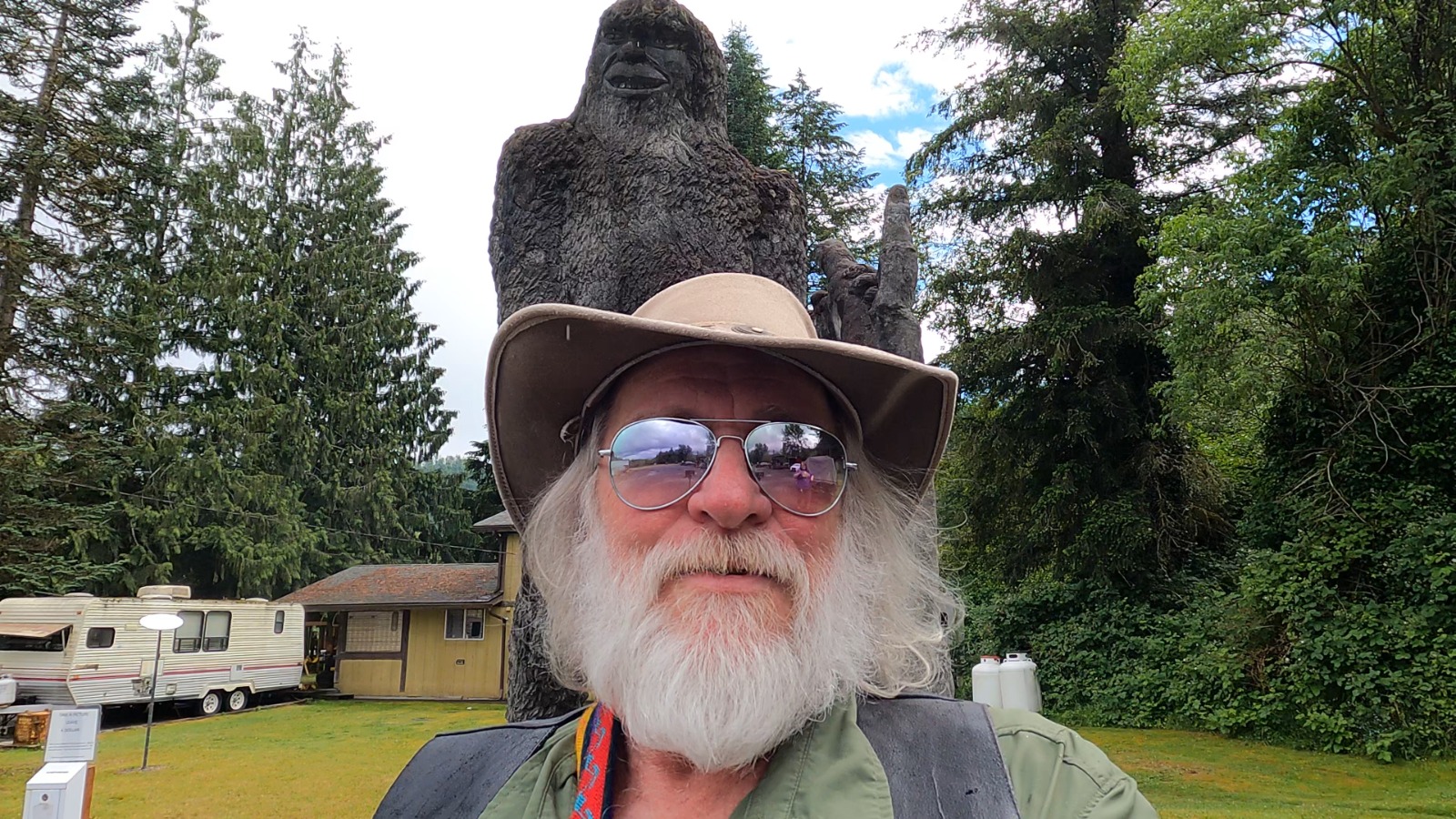For Father’s Day this year, my daughter and son-in-law took me Bigfoot hunting near Mount St. Helen’s. In honor of our little adventure, today’s post is about Sasquatch.
Check out the video here…
For centuries, tales of a mysterious, elusive creature known as Bigfoot or Sasquatch have captivated imaginations worldwide. Descriptions of this legendary being vary, but it is commonly portrayed as a large, hairy, ape-like creature roaming the forests of North America.
The debate over Bigfoot’s existence has divided opinions, with staunch believers presenting evidence and skeptics debunking the claims. Bigfoot is one of the more credible cryptids, possibly being a residual hominid or a descendant of one of the great apes.
The Case for Bigfoot: Evidence Supporting Its Existence
Eyewitness Testimonies
One of the most compelling forms of evidence comes from the countless eyewitness accounts. Thousands of people claim to have seen Bigfoot across North America. These reports often describe a tall, bipedal creature covered in dark, shaggy hair, with features resembling both humans and apes. While eyewitness testimony can be subjective and prone to error, the consistency in descriptions across time and geography adds weight to these accounts.
Footprints
Large, unexplained footprints are one of the most famous pieces of evidence linked to Bigfoot. These tracks often measure 15 to 24 inches in length and have been found in remote forested areas. On our Bigfoot expedition last Saturday, we stopped at the Bigfoot Interpretive Center in Toudle, Washington and saw multiple castings from just such footprints. These footprints are typically far larger than those of any known animal, and their depth and stride suggest they were made by a creature of significant size and weight.
Audio Recordings
Enthusiasts have also captured audio recordings purportedly of Bigfoot’s vocalizations. These recordings include various sounds such as howls, screams, and knocks. The “Sierra Sounds,” recorded in the early 1970s by Al Berry and Ron Morehead in the Sierra Nevada mountains, are among the most famous. These recordings have been analyzed by experts who concluded that the vocalizations do not match those of any known animal species.
Hair and Tissue Samples
There have been instances where supposed Bigfoot hair and tissue samples have been collected for analysis. Proponents argue that some of these samples have been found to be of unknown origin or do not match any known species in the region. In 2014, a team led by Dr. Sykes at Oxford University conducted DNA analysis on several such samples. While most were identified as belonging to common animals, a few did not match any known species, leaving room for speculation.
5Indigenous Legends and Historical Accounts
Indigenous cultures across North America have long included stories of large, hairy beings similar to Bigfoot. Known by various names, such as Sasquatch in the Pacific Northwest and the Skookum among the Salish, these beings have been part of local lore for generations. These stories often describe the creatures as forest dwellers with human-like traits, and they predate modern Bigfoot sightings by centuries.
The Case Against Bigfoot: Evidence Disputing Its Existence
1Lack of Physical Evidence
The most significant argument against Bigfoot’s existence is the absence of concrete physical evidence. Despite numerous reported sightings and extensive searches, there have been no verified discoveries of Bigfoot remains, bones, or fossils. Critics argue that a creature of Bigfoot’s reported size would leave behind more tangible evidence, such as carcasses or scat, which has never been conclusively found.
Hoaxes and Misidentifications
The Bigfoot phenomenon has a long history of hoaxes and misidentifications. Many alleged Bigfoot sightings and evidence have been debunked as pranks, misunderstandings, or deliberate fabrications. For instance, the infamous 1967 Patterson-Gimlin film, one of the most iconic pieces of Bigfoot evidence, has faced scrutiny and allegations of being a staged hoax. I debunked this particular hoax on my Conspiracy Chronicles Youtube Channel. Furthermore, some supposed Bigfoot tracks and hair samples have been proven to belong to known animals like bears.
Alternative Explanations
Skeptics often propose alternative explanations for Bigfoot sightings. These include encounters with known wildlife, such as bears walking upright, or even encounters with other humans in unusual situations. The phenomenon of pareidolia, where the human brain interprets random patterns as familiar shapes, may also explain why people perceive faces or figures in the wilderness.
Scientific Consensus
The scientific community largely remains unconvinced by the evidence for Bigfoot. Most scientists argue that the lack of verified physical evidence, combined with the many debunked claims and hoaxes, makes the existence of Bigfoot highly improbable. Scientific scrutiny demands replicable, empirical evidence. To date this evidence has not been provided by Bigfoot proponents.
Technological Advances
In an era where even the most remote areas are increasingly accessible, and with the advent of sophisticated wildlife monitoring technology, the continued absence of clear, undeniable evidence of Bigfoot’s existence is striking. While absence of evidence is not evidence of absence, modern techniques like trail cameras, drones, and genetic analysis have yet to yield any concrete proof of the creature.
The Enduring Mystery of Bigfoot
The legend of Bigfoot continues to thrive, fueled by a combination of anecdotal evidence, cultural stories, and a desire for the unknown. Whether viewed as a real creature, a cultural phenomenon, or a mix of myth and misinterpretation, Bigfoot remains a fascinating topic of debate. While skeptics demand more substantial proof, believers maintain that the mystery of Bigfoot is still out there, waiting to be uncovered.
The story of Bigfoot serves as a reminder of humanity’s enduring curiosity and the wonder we find in the unexplored corners of our world. Whether Bigfoot is a figment of our collective imagination or a yet-to-be-discovered species, the legend endures, inviting us to keep looking and wondering.
Do you have a Bigfoot story? Share it with us in the comments below!
